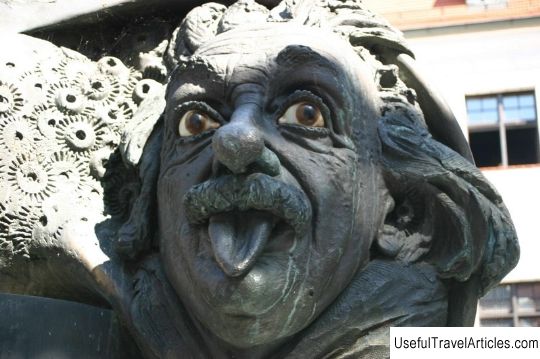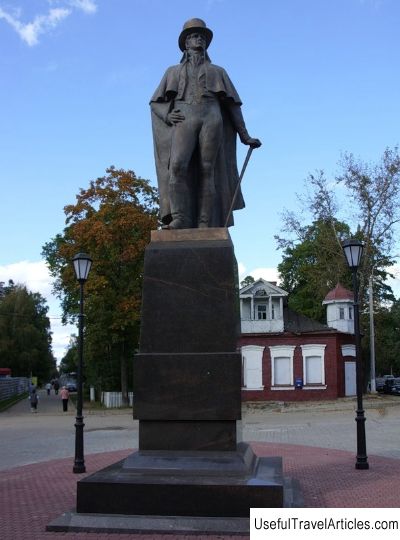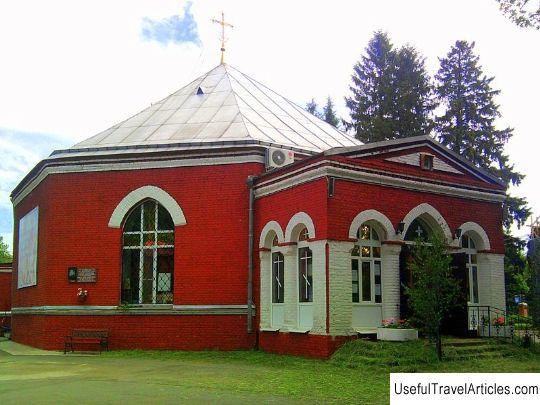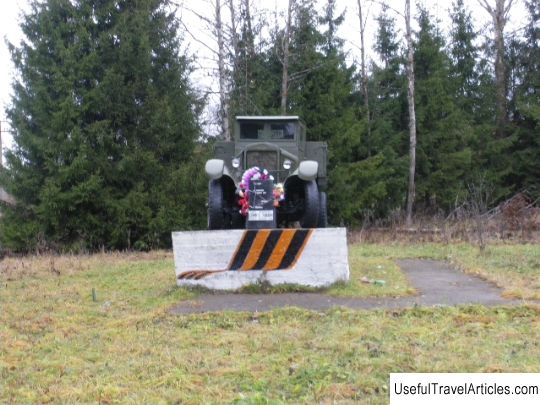Rumbolovskaya mountain description and photo - Russia - Leningrad region: Vsevolozhsk
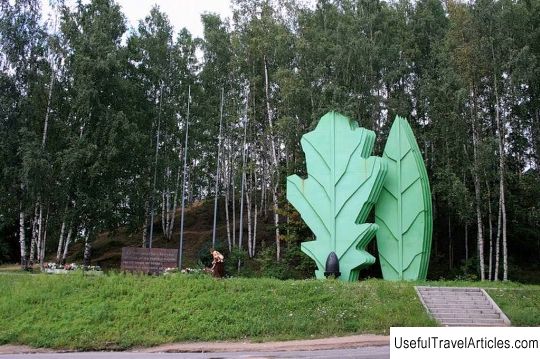
Rumbolovskaya mountain description and photo - Russia - Leningrad region: Vsevolozhsk. Detailed information about the attraction. Description, photos and a map showing the nearest significant objects. Photo and descriptionRumbolovskaya mountain is a memorial belonging to the Green Belt of Glory, erected by the workers of the Frunzensky district of Leningrad on the Road of Life in 1967 in Vsevolozhsk. The memorial is located on the slope of a high sandy mountain. May 7, 1965 in honor of the 20th anniversary of the victory in the Great Patriotic War, the laying of the `` first stone '' took place memorial ensemble and 20 birches were planted. The monument is located near the fork of two roads: to Lake Ladoga and Koltushskoe highway. The authors of the monument are architects V.N. Polukhin and P.F. Kozlov. The compositional solution of the monument is quite expressive and symbolic: large, upward-looking laurel and oak leaves and an acorn. Bay leaves symbolize glory, oak leaves represent strength, and an acorn expresses the idea of continuing life. Next to the monument there is a stele depicting trucks walking along the Road of Life to besieged Leningrad, poetry by Olga Berggolts is engraved on the stele. From Rumbolovskaya Mountain there was the only land road to Lake Ladoga used by the defenders of Leningrad. The 10th kilometer of the road passed in this place. Near Rumbolovskaya mountain, in Vsevolozhsk, two roads converge to Ladoga. In wartime, both were used, but the main road was from Rzhevka to Rumbolovskaya mountain. On the left side of the road, not far from the sign marking the borders of Vsevolozhsk, there is a granite stone, an inscription on which indicates that the Road of Life passed in this place. According to the memoirs of veterans, this first memorial sign was installed on the initiative of Lieutenant General FN Lagunov, the former head of the rear of the Leningrad Front. The road of the international winter marathon "The Road of Life" runs through the memorial. Not far from this place is a memorial dedicated to the feat of the Afghan campaign soldiers-internationalists. 92 residents of the Leningrad Region did not return from this war. The monument was erected at the initiative of veterans and members of public associations. Rumbolovskaya mountain has a rich history. There are many stories about the undergrounds of the city of Vsevolozhsk, including under the Rumbolovskaya mountain. In 1984, one of the fragments of an underground passage was found here. In the course of long and complex underground work, rubble was cleared and new underground halls were opened, which were made without fasteners in silty loess-like loams. Also found here: underground drainage, fragments of a log flooring, a kind of adit, completely covered with clay. The purpose of these dungeons and the time of their creation have not been established. Excavations in these places were stopped, as it became dangerous, as there was a possibility of the collapse of the vault. Fans of all kinds of travel underground claim that the entire Rumbol mountain was dug up by underground tunnels. The caves go in different directions and, perhaps, have existed since time immemorial. According to local legends, several passages lead quite far and are connected with the Koltush quarries, which are located almost 10 km from Vsevolozhsk. It is still not known exactly how many of these underground passages and where they lead. It all started with an unusual building called the Red Castle, the ruins of which are located on the slope of Rumbolovskaya mountain. It is not precisely established by whom and when the Red Castle was built. But it is known for sure that at the beginning of the 19th century it was already there, and the Vsevolozhskys received it in a very neglected form. In pre-revolutionary times, the building was adapted for a workman's building, and the Vsevolozhskys' house was built on the top of the mountain above the old walls. The new house burned down in 1926, but the mysterious walls of the Red Castle remain to this day, despite the fact that they were burned and rebuilt several times. According to legend, the Red Castle was built by the Swedes. The road "Swedish bridges" passes through Rumbolovsky park, so called in memory of the gates that were built here in the 16th century. Swedish commander Pontus De la Gardie. This road ran from Kexholm (now Priozersk) to the town of Ryabovo (today Vsevolozhsk) through the Ruutunsky pogost (now Sosnovo), and then diverged to Nyenshants (a cape at the confluence of the Neva and Okhta) and Noteburg (Oreshek). Deep underground under the castle there were huge cellars in which huge supplies of food could be stored. The Red Castle was both a dwelling and a kind of stronghold, where Swedish troops could stop for replenishment and rest on the way to Ingermanlandia and further Muscovy. For this purpose, most likely, it was erected in a marshy and semi-desert area a castle with two towers in five tiers, which, if necessary, could be a defensive point. For movement through the swamps, gats were laid, and a system of underground passages was arranged for a secret retreat. where Swedish troops could stop for replenishment and rest on the way to Ingermanland and further Muscovy.For this purpose, most likely, a castle with two towers in five tiers was erected in a marshy and semi-desert area, which at of necessity could be a defensive point. For movement through the swamps, gats were laid, and a system of underground passages was arranged for a secret retreat. where Swedish troops could stop for replenishment and rest on the way to Ingermanland and further Muscovy.For this purpose, most likely, a castle with two towers in five tiers was erected in a marshy and semi-desert area, which at of necessity could be a defensive point. For movement through the swamps, gats were laid, and a system of underground passages was arranged for a secret retreat.      We also recommend reading House-Museum of Raphael (Casa Natale di Raffaello) description and photos - Italy: Urbino Topic: Rumbolovskaya mountain description and photo - Russia - Leningrad region: Vsevolozhsk. |
